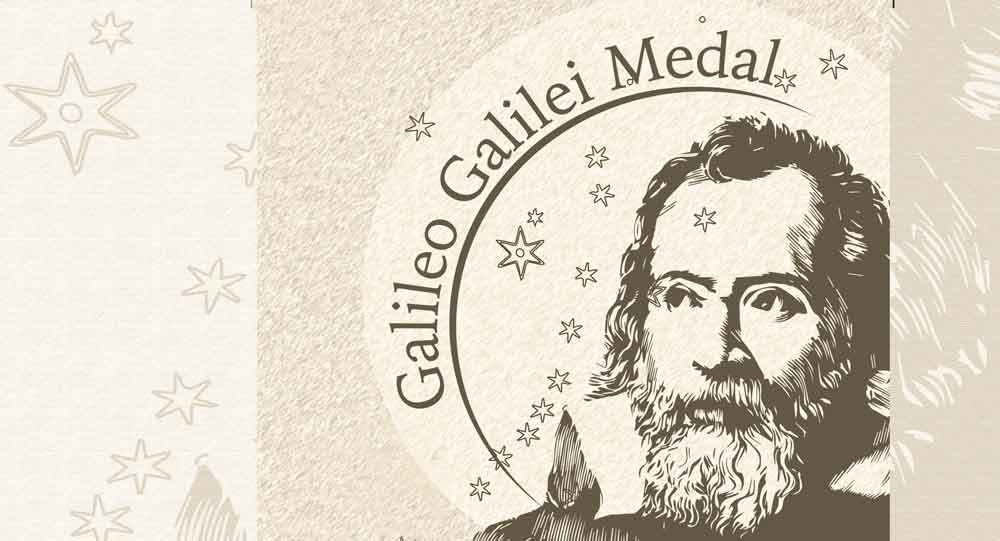The "Galileo Galilei Medal" Award
When the GGI was established as a National Centre for Advanced Studies, INFN created the "Galileo Galilei Medal" award in honour of the founding father of the scientific method and of modern physics. Starting from 2019, the Galileo Galilei Medal is assigned every two years by a special committee appointed by the INFN president with the contribution of the GGI director, the chair of the INFN committee for theoretical physics and the INFN executive board.
The medal is assigned to one or more scientists (three at most) who, in the 25 years before the date of the award, have achieved outstanding results on the areas of theoretical physics of interest to INFN. The Prize is announced on February 15th, on the birthday of Galileo Galilei.
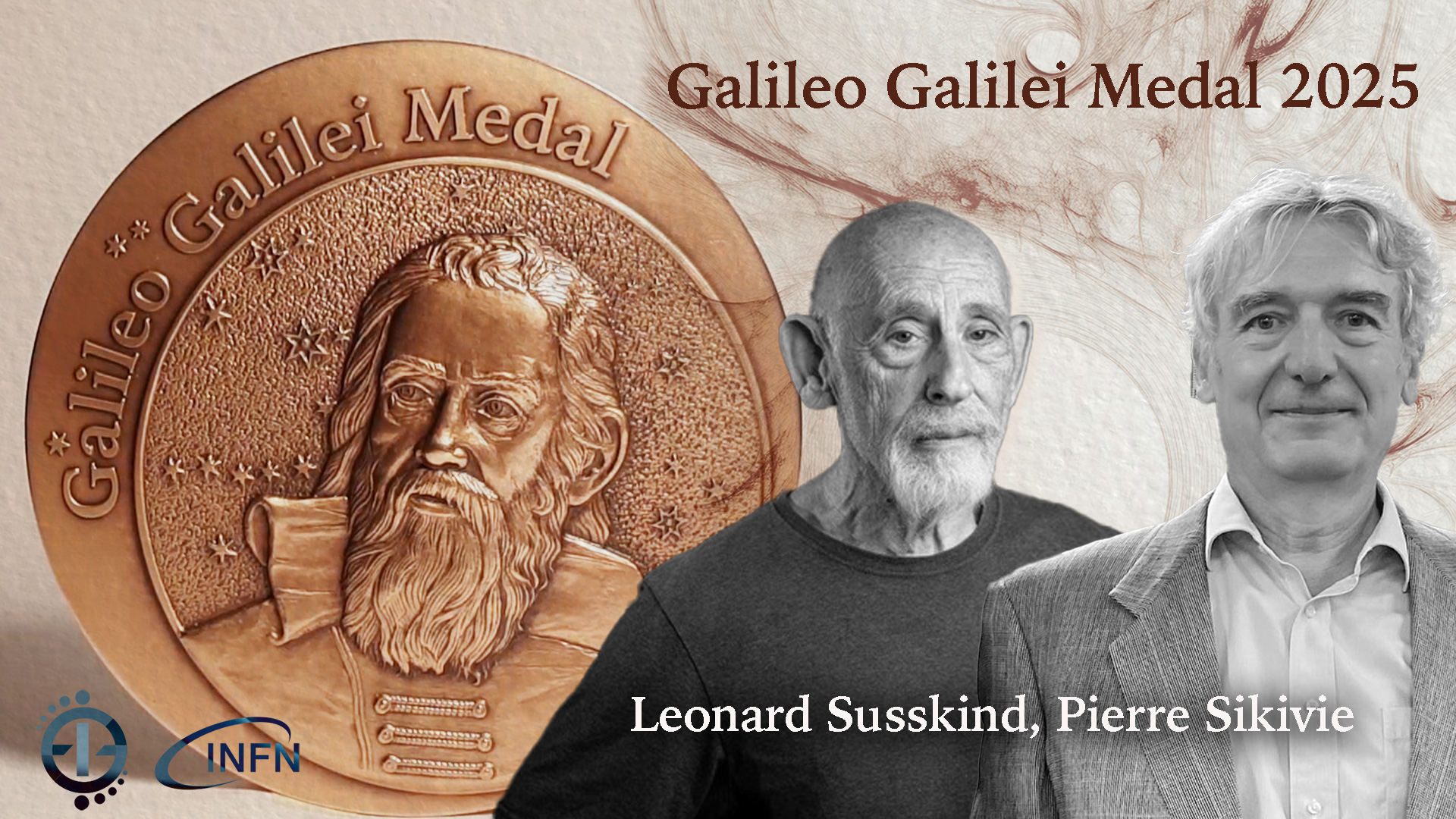
|
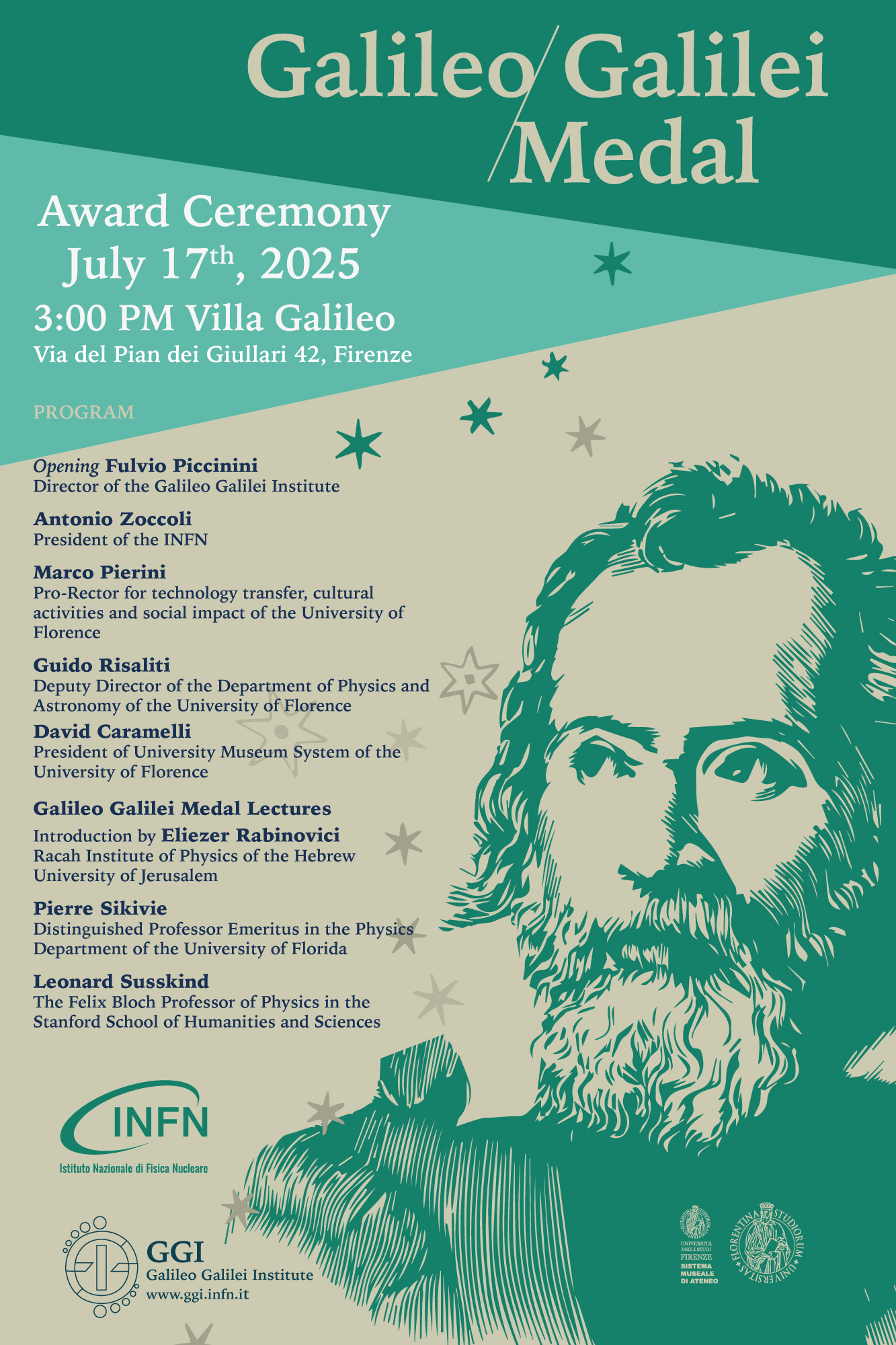
|
The 2025 Galileo Galilei Medal has been awarded to Pierre Sikivie and Leonard Susskind, "for their work representing humanity's persistent efforts to see and understand what may seem invisible, revealing in the process deep connections between the largest and smallest scales of Nature".
Specifically, Pierre Sikivie made pioneering contributions to our understanding of the cosmos, as did Galileo Galilei, in trying to make the 'invisible axion' visible. Axions are hypothetical particles initially introduced to solve a problem in the microscopic realm of the theory of strong interactions. If their existence were confirmed, one of the greatest mysteries of our universe could be solved, namely, the nature of dark matter could be revealed, and a fundamental mystery concerning the quarks of the subatomic world would also be clarified. Leonard Susskind's work, on the other hand, has been fundamental because it has uncovered and deciphered the challenges that black holes in the universe pose to the classical and quantum nature of gravity, while also weaving deep connections between the cosmos and the elementary particles.
"I have always admired Galileo Galilei for the way that he was able to draw the most far reaching and profound conclusions from the simplest ideas. In that regard, he was similar to Albert Einstein," comments Leonard Susskind, "It is wonderful to be honored with the Medal bearing his name."
"This year's prize highlights the deep connections between microcosm and macrocosm, which originate from the exploration of the mysteries of fundamental interactions and link particle physics to astrophysics and cosmology," remarks Fulvio Piccinini, director of GGI, congratulating the winners. "Sikivie's work on axions has been fundamental both in elucidating the role of these particles as candidates for solving the problem of dark matter in the Universe and in identifying new investigation methods for their experimental detection. On the other hand, Susskind has made fundamental contributions to the study of quantum aspects of black holes, revealing deep connections between the physics of fundamental interactions, quantum information and complexity."
Pierre Sikivie is Distinguished Professor Emeritus in the Physics Department of the University of Florida. Born in Belgium, he obtained his PhD from Yale University and held postdoctoral fellowships at the University of Maryland, SLAC and CERN before joining the faculty in Florida. He is a recipient of the J.J. Sakurai Prize for Theoretical Physics of the American Physical Society, and a Fellow of the American Association for the Advancement of Science.
Leonard Susskind is the Felix Bloch Professor of Physics in the Stanford School of Humanities and Sciences. His research interests include string theory, quantum field theory, quantum statistical mechanics and quantum cosmology. He is a member of the National Academy of Sciences of the USA, and the American Academy of Arts and Sciences, an associate member of the faculty of Canada's Perimeter Institute for Theoretical Physics, and a distinguished professor of the Korea Institute for Advanced Study.
The members of the Selection Committee of the 2025 Galileo Galilei Medal were Sally Dawson, Juan Martin Maldacena, Eliezer Rabinovici (Chair), Mikhail Shifman, Michael S. Turner.
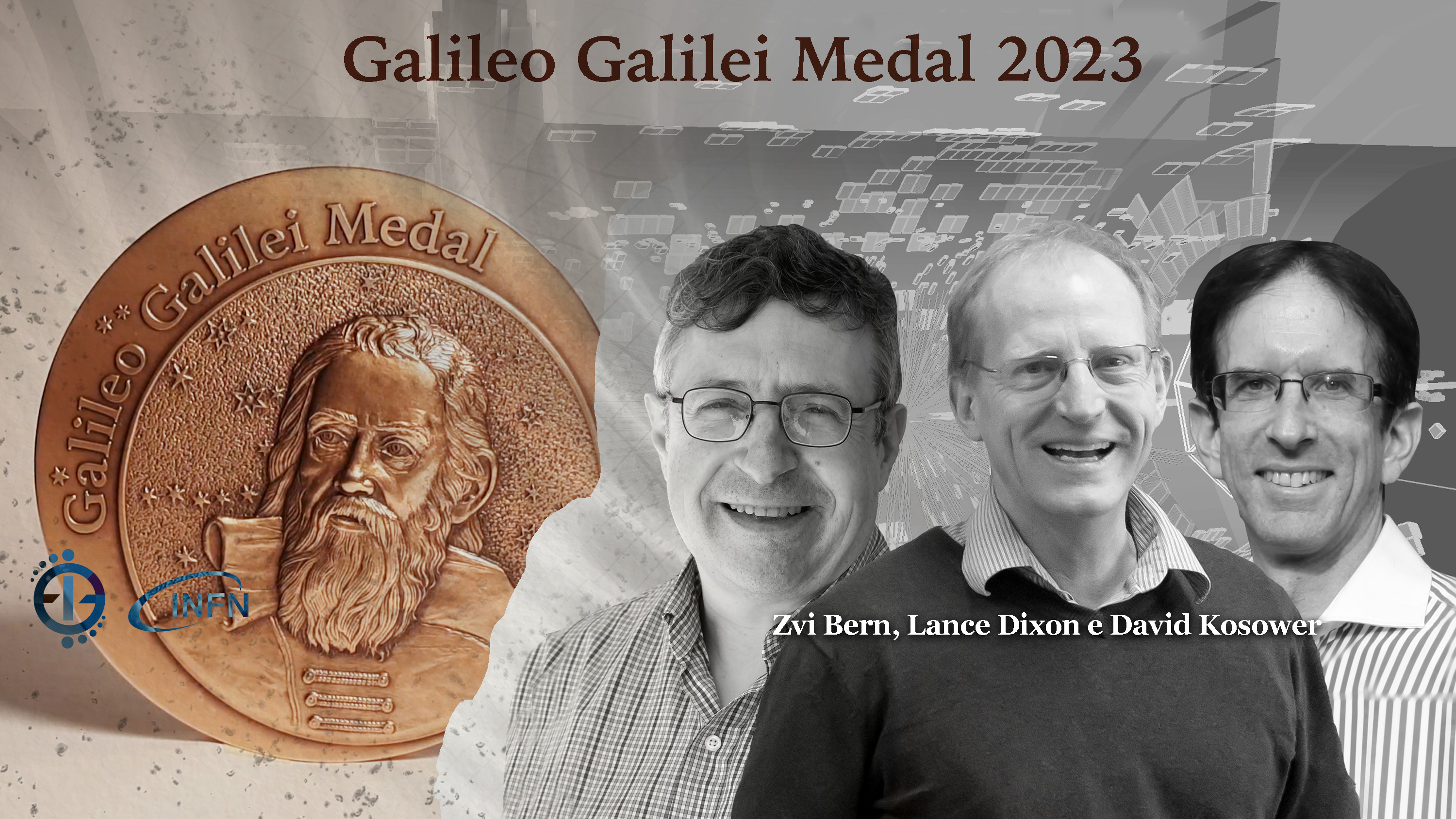
|
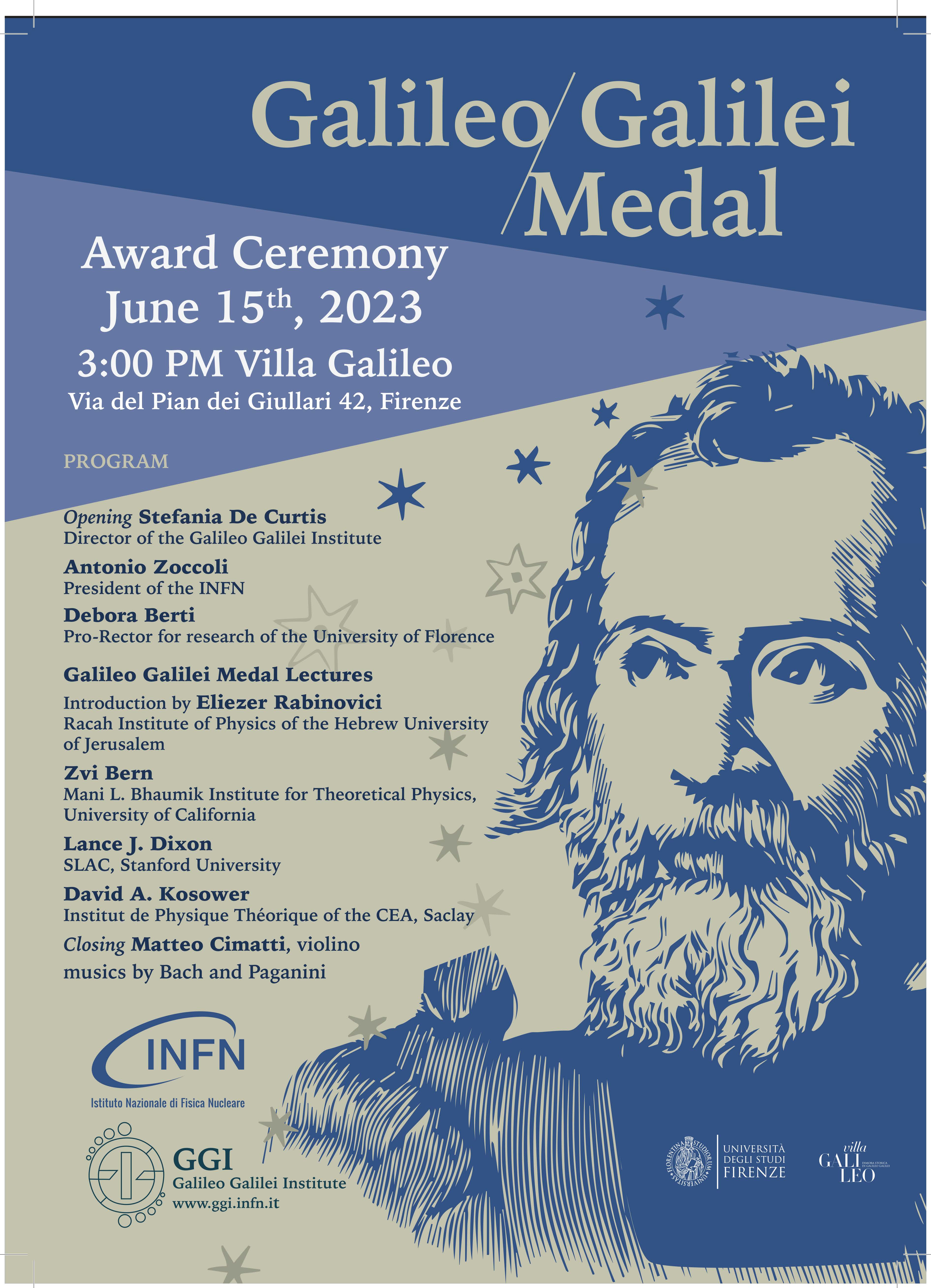
|
The three physicists Zvi Bern, Lance Dixon and David Kosower were awarded the 2023 Galileo Galilei Medal for the development of powerful methods for high-order perturbative calculations in quantum field theory. These powerful theoretical computational methods have been essential for comparing theoretical predictions with experimental results obtained at CERN Large Hadron Collider.
"There was a problem in the early nineties: try to make the most use of colliders that were under construction,
like the LHC at CERN. A collider is a very complicated environment to try to learn the secrets of nature: it
collides protons that are made up out of quarks and gluons, which interact with each other through a force called
strong force. Particle theorists call it QCD, Quantum Chromo Dynamics, where Chromo stands for the colors of
the quarks and the gluons exchanged in the collisions," explains Lance Dixon .
"We were able to convert a property of QCD, known as unitarity, to a tool for doing more precise calculations,
both for processes at the LHC but also in simpler processes."
Video interview
"At the beginning, our goal was to refine and improve the theoretical tools that were available to experimenters
in particle physics. So, we developed new and more efficient methods for doing the theoretical calculations.
These new methods allowed us to do many more calculations and to reach much higher precision than was possible before,"
adds David Kosower. "These developments allowed a new generation of researchers to continue to develop new techniques
and new calculations for the LHC, but also to make connections to many other branches of physics: they revealed
very intriguing connections between theories like Quantum Chromo Dynamics and Gravity."
Video interview
"When David Kosower, Lance Dixon and I started thinking about the so-called scattering amplitudes, it seemed to most
people that all the important ideas had already been worked out. In the 1950s and 1960s, the topic was not of much
interest, but the three of us had a different viewpoint inspired by various results," says Zvi Bern .
"The path to convince the community that there was something deep and interesting in scattering amplitudes was not an easy
one: when we started, you could fit everyone interested in the subject in a small broom closet.
But now, the problem is to find lecture halls large enough for the conferences and workshops. I always marvel at the fact
that we are no longer the only ones who find joy in studying this topic."
Video interview
"I'd like to sincerely congratulate the winners of the Galileo Galileo Medal 2023 who are also great friends of the GGI.
The three of them have been contributing a lot to the GGI activities with their participations to several research programs
and conferences," comments Stefania De Curtis, director of GGI. "The work of Bern, Dixon and Kosower, really played a central
role in enhancing our ability to compare theory and experiment at particle colliders but also to extract information
from gravitational wave observatories. Physicists often expect that outstanding results come from new theories arising
from new principles. However, sometimes they arise from a careful reinterpretation of already known principles. This is
indeed the case for the exceptional results obtained by Bern, Dixon and Kosower: a revolution in our understanding
of the processes involved in particle collisions, greatly improving our ability to discover the underlying physical phenomena."
Zvi Bern is a distinguished professor and the director of the Mani L. Bhaumik Institute for Theoretical Physics at the University of California, Los Angeles. Together with his co-recipients, he is a founder of the modern field of scattering amplitudes in quantum field theories. He contributed to various topics including supergravity, supersymmetric gauge theory, physics of the Large Hadron Collider, and most recently to gravitational-wave physics
Lance Dixon is professor in the SLAC Theory Group at the Stanford Linear Accelerator Center (SLAC) of the Stanford University and a member of the U.S. National Academy of Sciences. He held visiting positions at the University of Cambridge, Durham University, Ecole Normale Superieure, CERN, Perimeter Institute, Caltech, ETH Zurich, and the University Zurich. And he was awarded the Sakurai Prize of the American Physical Society for his scattering amplitudes research (2014) and received the Humboldt Research Award in 2017
David A. Kosower Kosower is researcher at the Institut de Physique Theorique of the CEA at Saclay, in France. After graduating and completing his PhD at the Harvard University, he held postdoctoral positions at Columbia University, the Fermi National Accelerator Laboratory, and CERN. He held visiting appointments at the University of Zurich , the Weizmann Institute, the California Institute of Technology, the Institute for Advanced Study, the Chinese Academy of Sciences (Beijing), and CERN. His research has been supported over the years by NATO and EGIDE collaborative grants, by the French National Research Agency (ANR), and especially by the European Research Council.
The members of the Selection Committee of the 2023 Galileo Galilei Medal were Graciela Gelmini, Juan Maldacena, Michael E. Peskin, Eliezer Rabinovici (Chair), Mikhail Shifman.
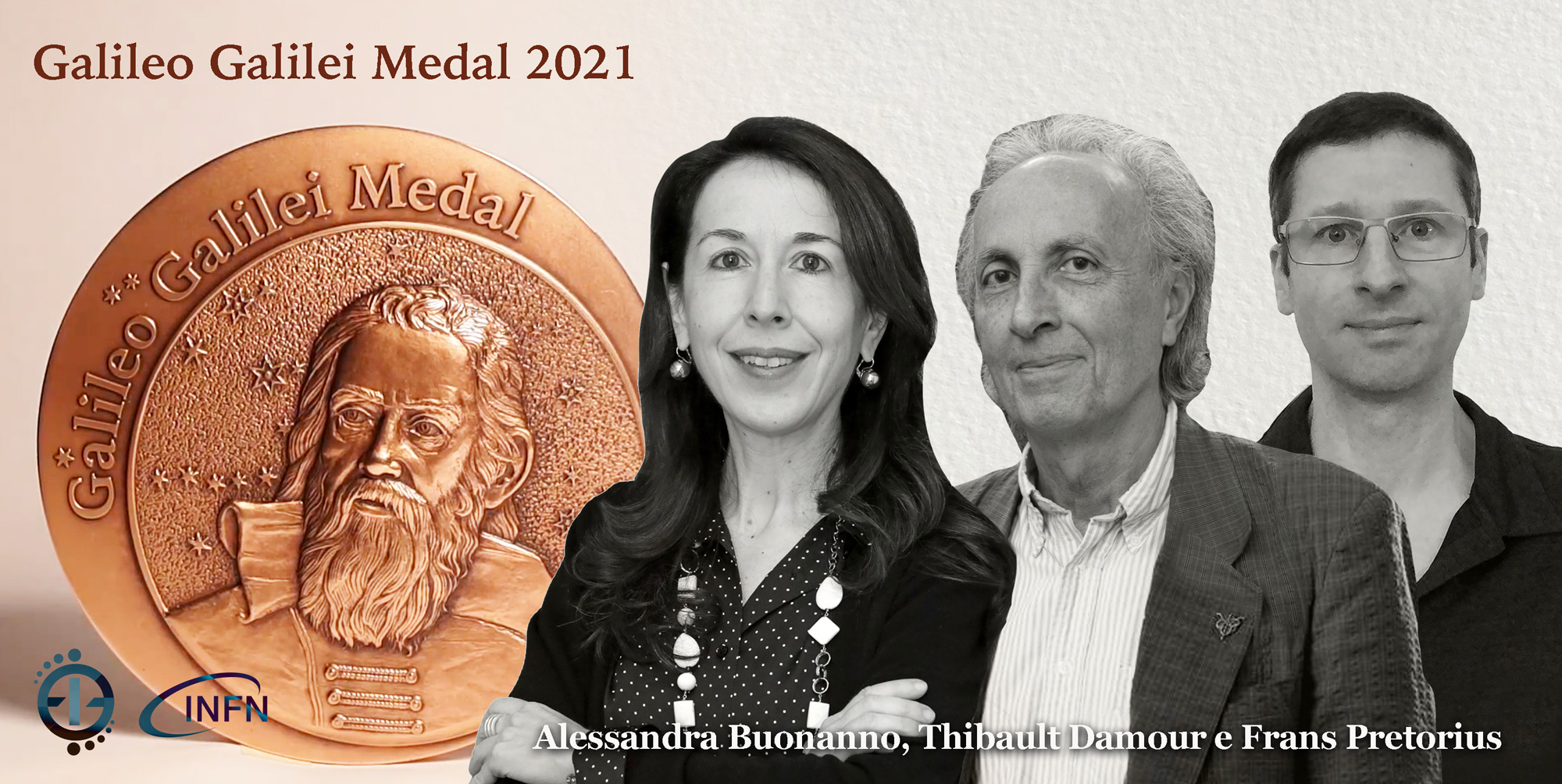
|
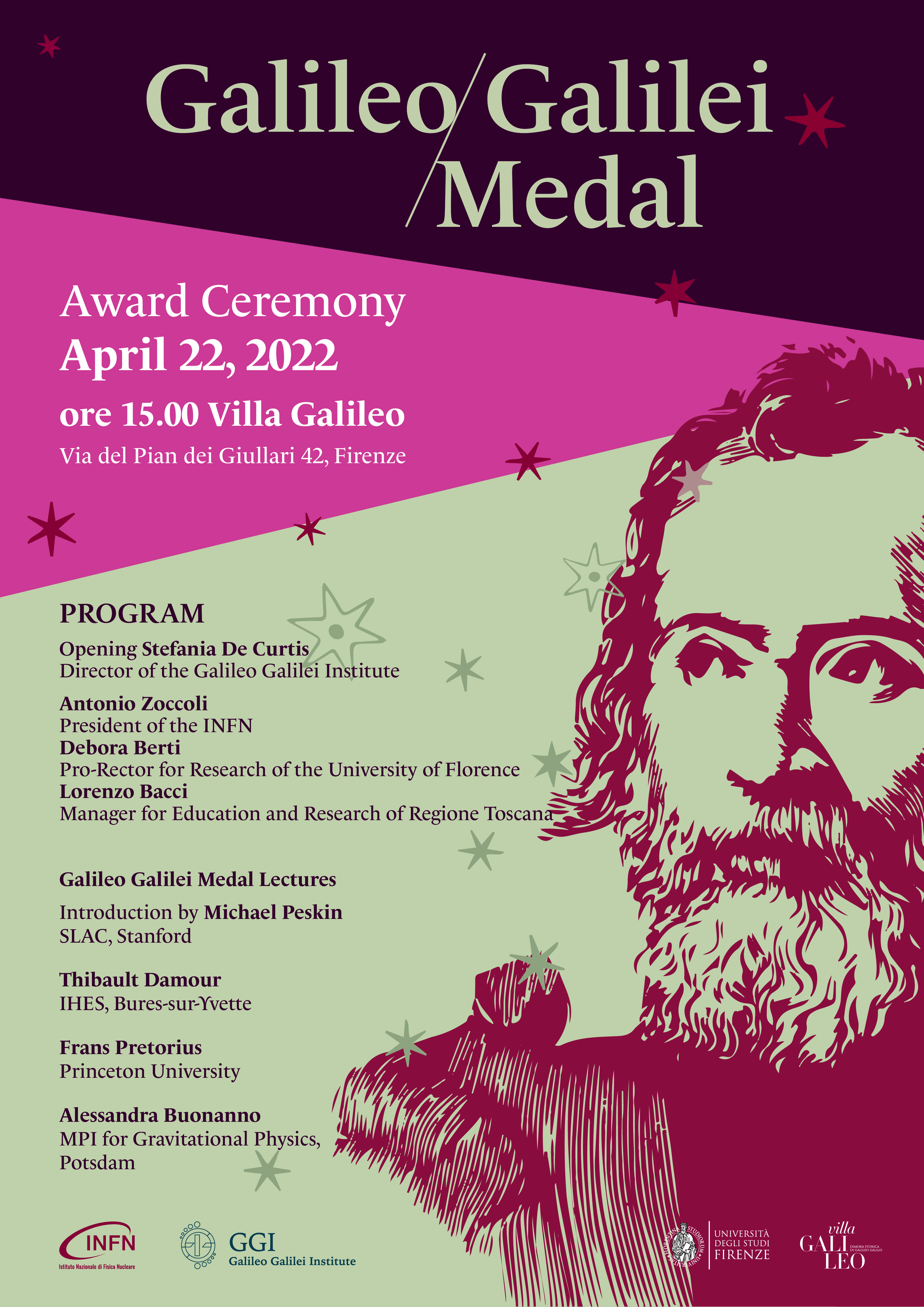
|
The three physicists Alessandra Buonanno, Thibault Damour and Frans Pretorius were awarded the 2021 Galileo Galilei Medal for the theoretical studies describing the behavior of two black holes spiraling around each other until they collide, a research proved to be of great importance for the analysis of the experimental data of the gravitational waves detectors VIRGO and LIGO.
"To identify the source that generated the gravitational waves we observe on Earth,
we need hundred thousand of waveform models. To achieve this goal about 20 years ago
we introduced a novel approach to solve analytically the two-body problem in general relativity,"
explains Alessandra Buonanno. "This approach paved the way to develop the highly precise waveform
models that today are routinely used by LIGO and VIRGO to detect binary systems composed of
black holes and neutron stars and infer unique information about astrophysics, cosmology and gravity", Buonanno concludes.
Video interview
"In 1998 we developed a new theoretical model to describe analytically what happens
when two black holes orbiting around each other get closer and closer until they merge",
says Thibault Damour. "Our model predicted that this process releases an enormous amount
of gravitational radiation and provided the first analytical estimate of the full
gravitational wave emitted during the last orbits and the coalescence of the two black holes", Damour concludes.
Video interview
"Being able to numerically describe the behaviour of two astrophysical objects,
such as black holes orbiting each other, is a very complex problem that requires long hours of computation.
This problem interested me and in 2005 I came up with a first numerical
solution to describe what happens when two black holes collide," adds Frans Pretorius.
Video interview
Alessandra Buonanno is the director of the "Astrophysical and Cosmological Relativity" Department at the Max Planck Institute for Gravitational Physics in Potsdam. After her studies in Pisa, she had a brilliant career in theoretical gravitational physics that has taken her to work in Paris and the United States before landing in Germany. She has received numerous awards including the Leibniz Prize, the top research award in Germany.
Thibault Damour is full professor at the Institut des Hautes Etudes Scientifiques in Paris. Leading figure in the field of theoretical physics, he has worked on several research fields related to gravity, from black holes to cosmology to string theory and has received numerous awards during his career.
Frans Pretorius is a professor of physics at Princeton University and director of the Princeton Gravity Initiative. His main field of research is general relativity, and he has worked on a variety of topics, from gravitational collapse to black hole mergers, from cosmic singularities to black hole evaporation models.
The members of the Selection Committee of the 2021 Galileo Galilei Medal were Graciela Gelmini, Michael E. Peskin, Valery Rubakov, Gabriele Veneziano and Edward Witten (Chair).
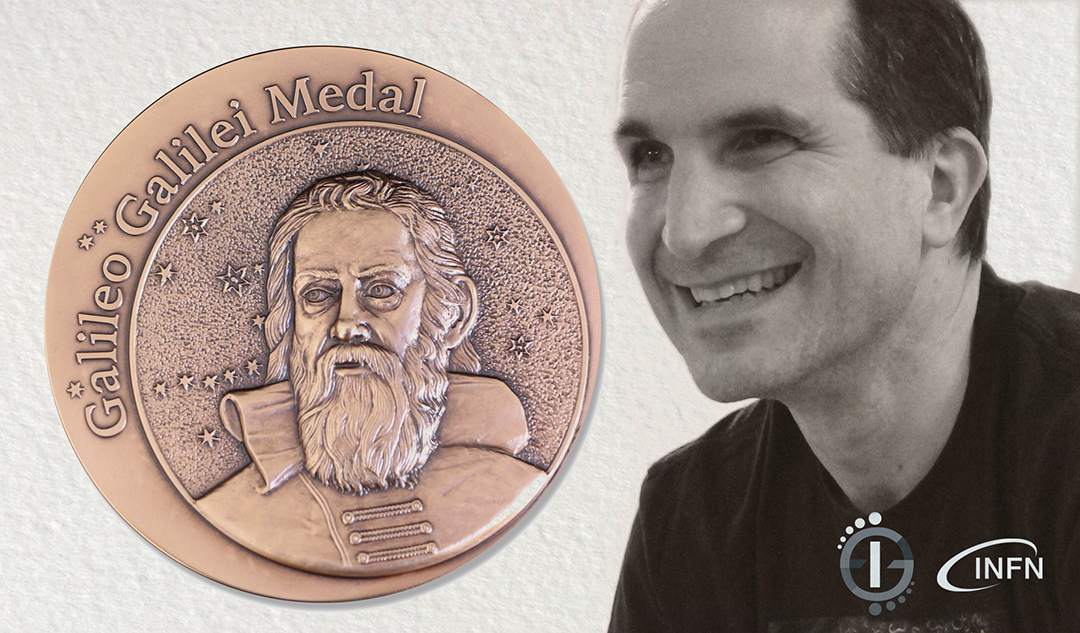
|
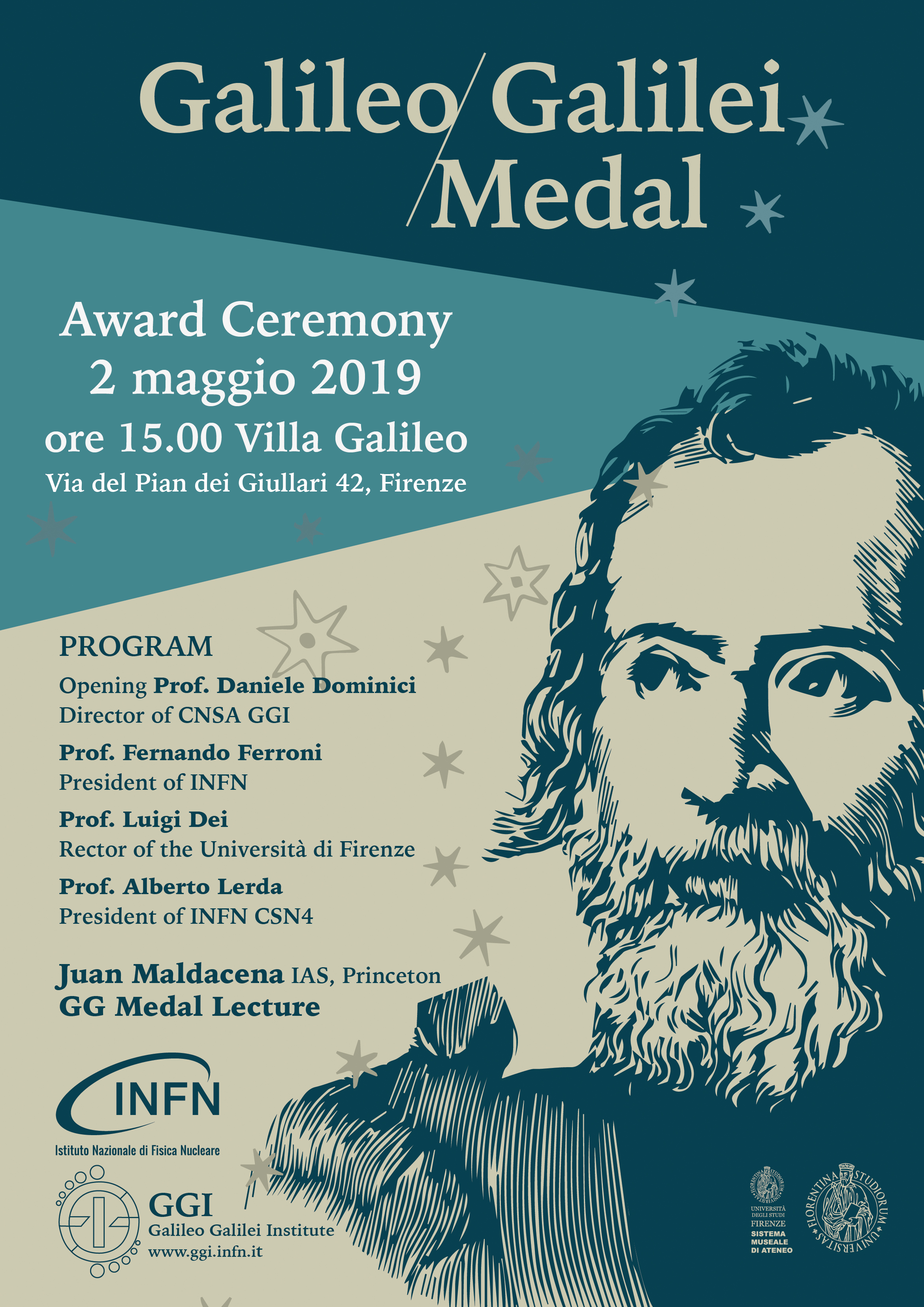
|
The Galileo Galilei Medal 2019 was awarded to Juan
Martin Maldacena with the following motivation:
"For his ground-breaking ideas in theoretical physics, and
especially for the discovery of duality between gravity
and ordinary quantum field theory, with far-reaching
implications." Born in Buenos Aires in 1968, Juan Martin
Maldacena is one of the most influential theoretical
physicists in the last decades. His ideas have opened
new scenarios in string theory, field theory and quantum
gravity. He is currently a member of the Institute for
Advanced Study in Princeton (USA).
The members of the Selection Committee of the 2019 Galileo
Galilei Medal were Sergio Ferrara, John Iliopoulos,
Helen Quinn, Gabriele Veneziano (Chair) and Edward Witten.
The Galileo Galilei Medal has been crafted by Picchiani&Barlacchi, the famous florentine workshop with over a century of tradition in the crafting of artistic and commemorative medals, plaques and trophies.
The history of Picchiani&Barlacchi began in 1896, when craftsman Gastone Picchiani began making medals in a small workshop in a cellar with a pantograph paid for in instalments. Picchiani's skill enabled him to open a workshop, with his brother, in the very central Via de' Fossi, where he hired three other
craftsmen.
In 1921, the firm became Picchiani&Barlacchi. Bruno Barlacchi was a bookkeeper who had begun keeping Picchiani's accounts in 1915. He had a passion for
medals and his instinct told him that they had immense potential in the world of sport. In 1950, Picchiani left his business to Barlacchi, and the workshop moved to his current premises in via Petrarca.
The products are crafted using traditional methods, beginning with the drawing, then the creation of a plaster model, the casting of the model, the reduction using the pantograph, the production of the die and finally the minting. Numerous famous sculptors have worked on the creation of the moulds for the products of Picchiani&Barlacchi.
In addition to the old pantographs, which are still used today, and other machines necessary for the production of the medals and plaques, the premises host an
extensive archive of minting dies, which would allow the reconstruction of the history of Italy and the world from the beginning of the 20th century to the present day.
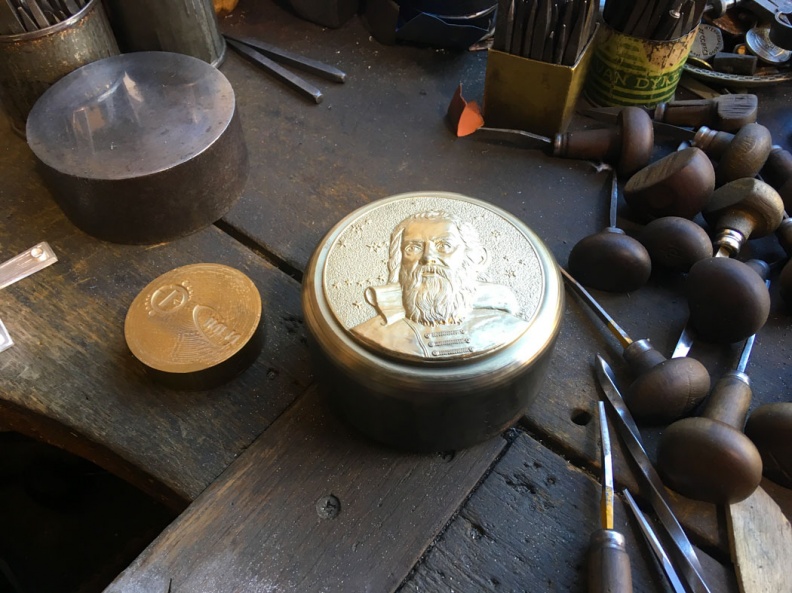 |
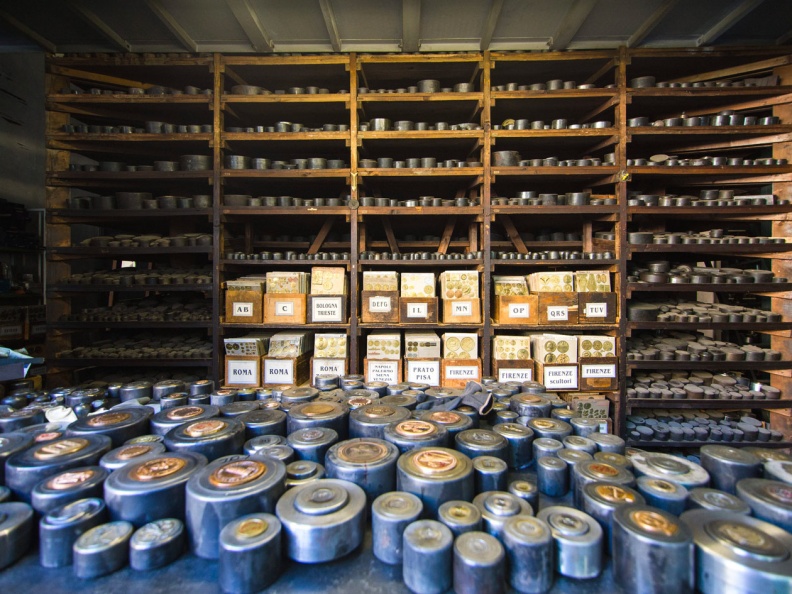 |
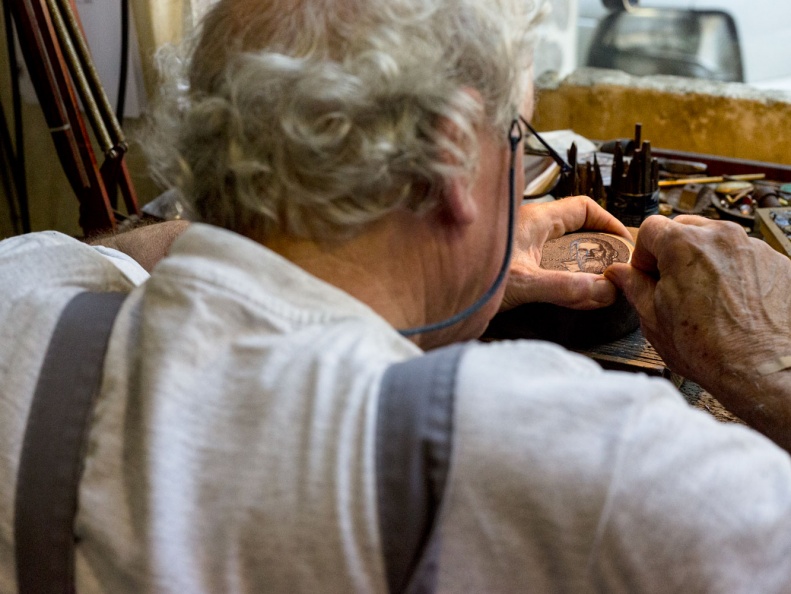 |
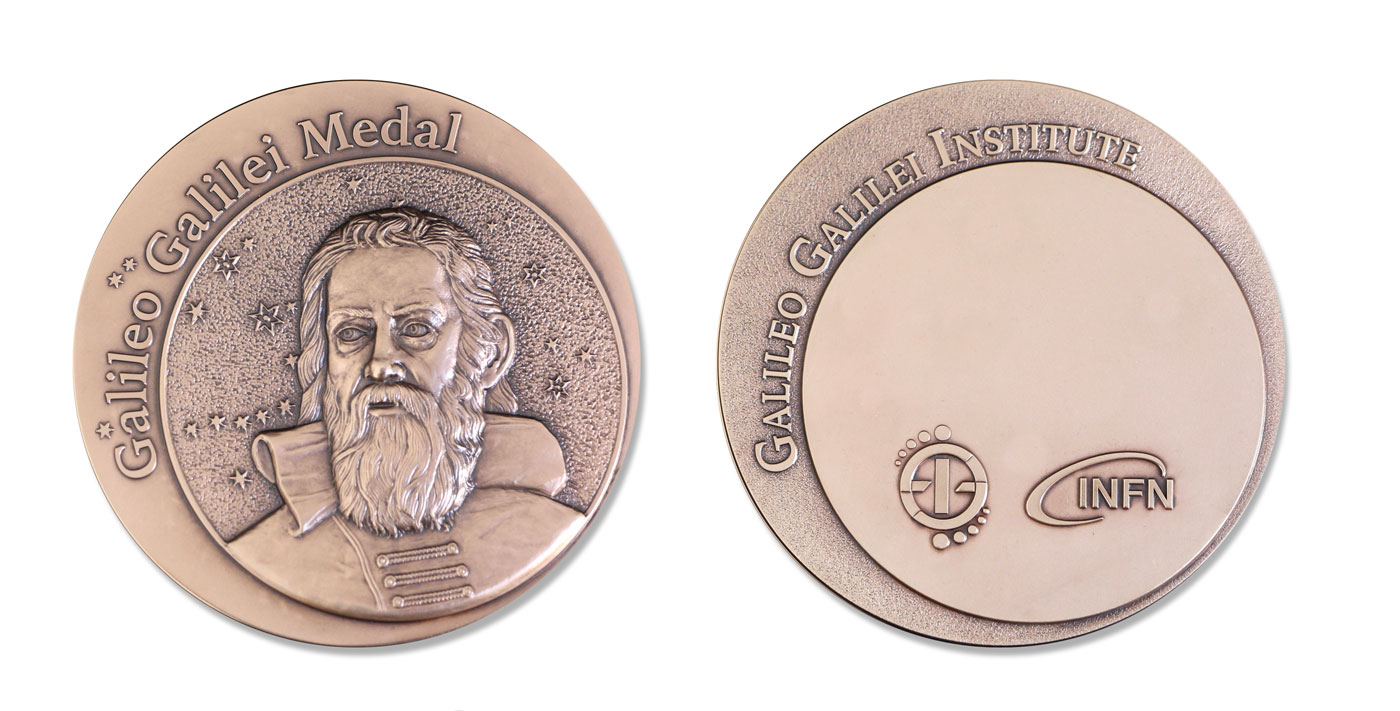 |

